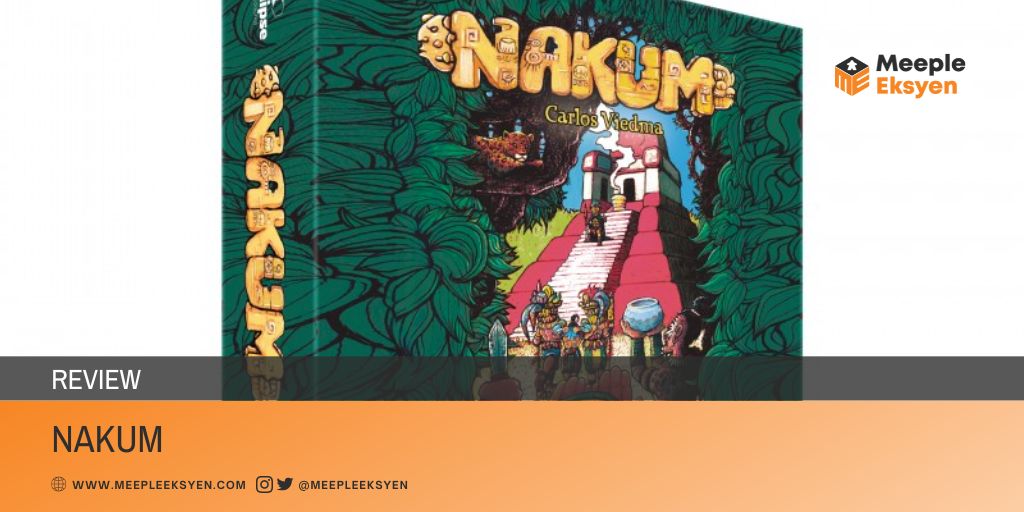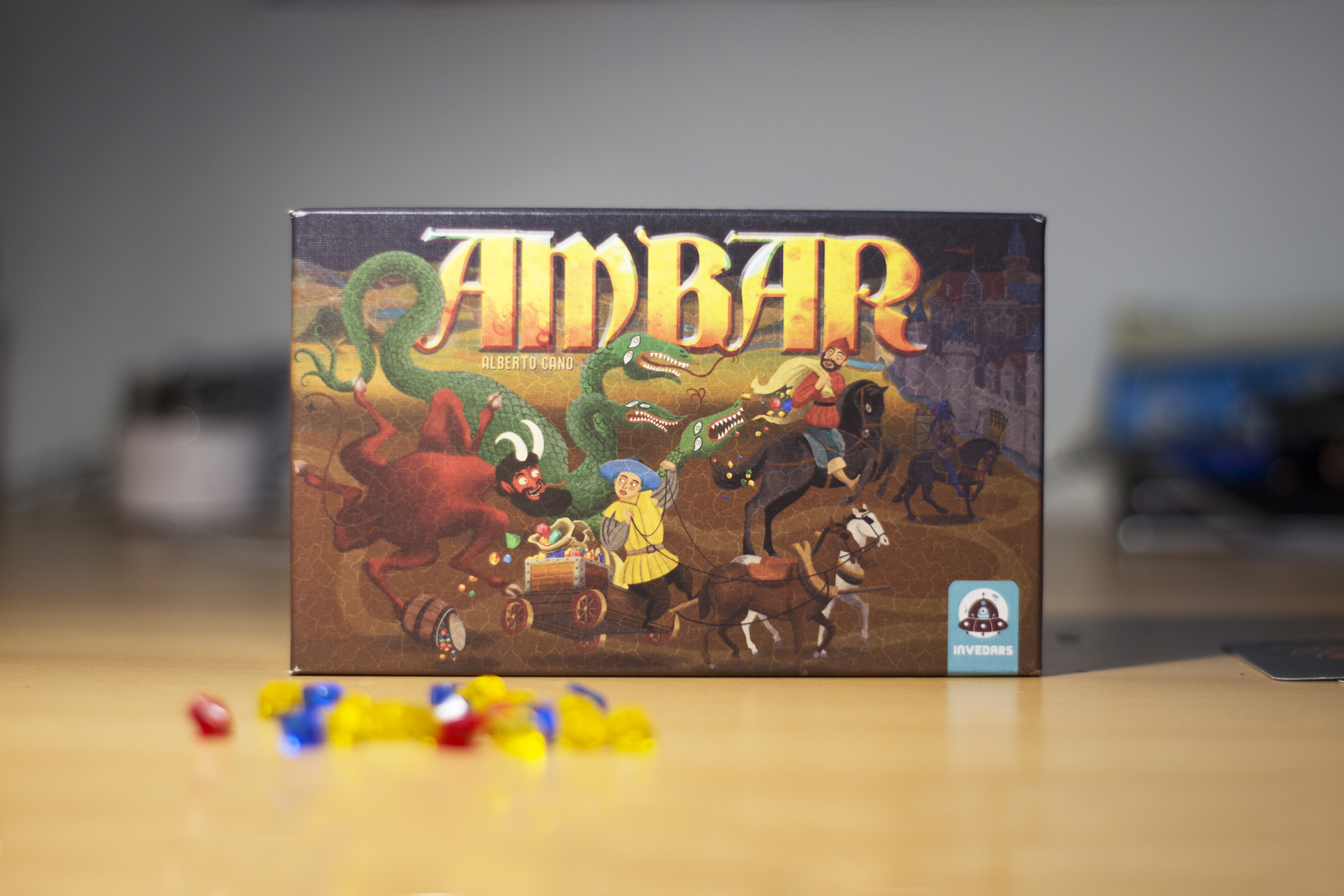Rolling back to the Tzolk’in calendar usage era and taking place in the same location as the game title, Nakum, Carlos Viedma defines the whole Mayan civilization in his compact game. The hunting, the harvest, and… The human sacrifice, too.
A short disclaimer before you read my board game analysis
As an avid euro gamer and hardcore Legend of the Five Rings (L5R) LCG player, my reviews may reflect a preference for these styles, and I may not cover solo games/variants extensively. Please note that my personal remarks are based on my gaming experiences, and I aim to provide honest insights within the scope of my preferences.
Nakum utilizes the worker placement mechanic to envelop the core gameplay. As the influential royal families, players send their clan members to explore the woods around the pyramid. A perfect archetype of this mechanic. The tiles are mostly accommodating one worker per round, which may feel restricting. Nevertheless, with the concrete nature of Nakum being somewhat a resource-based racing game, that curtailment seems a fair and a no nonsense implementation.
The game lays out a neat concept where the workers are not merely pawns to mark the already-exerted actions on the tiles. They also become a sort of resource. Reserved distinctively for the Pyramid actions (read: human sacrifice), the workers are another currency to take care of in this game. No wonder, all families are competing for this tile at the late game. Two workers are required to obtain a new one for the next round — quite a hefty cost to let go a pair of our markers in a go, yet naturally an acceptable occurrence, realistically speaking. It takes two to tango. And in this case, to reproduce offspring. Yet, the alarming thought still arises: do we really procreate to later sacrifice our children to our god?
I do like how Carlos rewards the players to go for explorations. At first, not the whole forest is openly available for all players. They need to traverse and scout. Afterwards, the complete tiles are present, providing more actions for the entire royal families in the game.
A neat touch in the gameplay. With a conversion rate of one worker for one VP, it is quite an efficient engine in the early game. But is it really worth it, though? I mean, with limited tile per turn leads to restricted actions as well — which results in losing momentum against your other foes. My answer: Not really. I would rather send my workers to farm resources, utilizing it in the next round when the discovered tiles are open and available to roam around in.
We have no specific number of rounds in Nakum. With that being said, one game can abruptly end when one royal family has successfully concluded two sacrifices/offerings. Hence, the racing game. The victory points (VP) from this aspect are generous, too. It would not be an exaggeration to pinpoint, that whoever carries out the second sacrifice would most definitely, if not always, snatch the victory.
Nakum requires less effort to set up and to play it right away. The modest components are really helpful to expedite this process, and it fits the no-nonsense approach as well. The language independent feature makes most of the actions self-explanatory, too. Easy to learn. And easy to play. Replay value is absolutely there — I could see Nakum climbs up to our table often, but perhaps only as a filler game, though.
Conclusion
Despite the gut-wrenching, yet, authentic, details from the dark age of humankind, Nakum is still as enjoyable as other game. There is a lot to like in Nakum. As a small and simple euro game, it can become a reliable gateway game. Something that we can bring to add more flavour and step up the complexity for those who want to try euro games, yet have little to no experience with it.
Do you love board games as much as we do? Support us!
Thank you for reading our articles! If you enjoyed our work and want more captivating board game contents, make sure to:
👉 Follow us on our social media — you can find us on ![]()
![]()
![]() Click one of the icons to land on our social media, or find us @meepleeksyen there, it’s just a click away! Stay updated with our latest board game reviews and previews by following us on those platforms 📱👍
Click one of the icons to land on our social media, or find us @meepleeksyen there, it’s just a click away! Stay updated with our latest board game reviews and previews by following us on those platforms 📱👍
💬 Do you have contrasting opinions? Leave a comment — share your thoughts with us, we’d love to hear (or read) yours! Have you played this game before? Did you have something similar as well? Or perhaps, something more personal, like what are your favourite board games? Let’s discuss in the comments below!
🙏 Support Us! Your generous support can help us produce even better content in the future. If you love what we do, consider making a donation to our blog. Every contribution counts and means a lot to us! You can either donate locally with Indonesian Rupiah (IDR) via Trakteer ![]() or for international readers with another currency through Buy Me a Coffee
or for international readers with another currency through Buy Me a Coffee ![]() It helps us to survive, too! 💰 Click one of the button below 👇
It helps us to survive, too! 💰 Click one of the button below 👇
I am a full-time food technologist during weekdays. However, when the calendar hits weekends, I transform into an avid board gamer. I am a hardcore Legend of the Five Rings (L5R) LCG player from Fantasy Flight Games (FFG). Current hobby: buying board games. My shelf of shame’s list is getting longer, thanks to you, Kickstarter.





